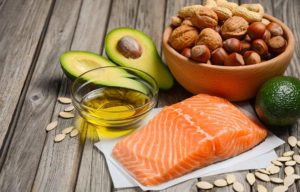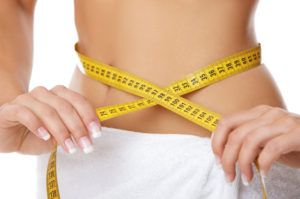What is the ketogenic diet? How can it be used for weight loss?

by Abby Austin
What is the ketogenic diet?
Some diets focus on how much you eat (low calorie diets), some focus on when you eat (fasting and 5:2). Others focus on certain eating styles inspired by natural history (paleo). However, the ketogenic diet focuses entirely on what you eat, down to macronutrient level. There are many benefits to the ketogenic diet, and fat loss is certainly one of them. Here’s an introduction, or refresher, to that low-carb wonder known as the ketogenic diet.
The ketogenic diet is an extremely low-carb diet which causes the body to go into a state of ketosis. This results in your body’s stored fat being used as the main energy source.
But first, let’s backtrack a bit – to properly explain the ketogenic diet, the history and science behind it must be briefly covered. The keto diet has actually been around in some form for thousands of years. It’s really a form of fasting: starving the body of certain food groups in order to achieve a desired result (including mental clarity and preventing illness).
Fast forward from the Ancient Greeks (and earlier) to the 1920’s when medical professionals began to prescribe the ketogenic diet to help epileptic patients control seizures. Since then, “keto” has been popularized into a mainstream eating trend for medical purposes as well as for weight loss. Now that we’ve covered where it came from and why it began, we can look more closely into what exactly it is and how it works.
How does it work?
It all comes down to macronutrients, more commonly known as fats, carbohydrates, and proteins. To reach ketosis, you must cut or heavily reduce carbohydrates, moderate proteins, and increase fats. Why? Because macros do different things to the body once they are consumed.
Carbohydrates and sugars are converted to glucose when eaten, then stored as glycogen in the muscles as cells. Your body loves to use glucose as energy, so it will choose it over any other macronutrient (proteins and fats). This means that fats are stored away instead of being used as energy. So, when you take the carbs away, your body makes up for the loss by using fat for energy, and creating ketones as an additional energy source – hence the “keto” part. When you reach this stage, you are in what’s called “ketosis” – the goal of the ketogenic diet.
Here’s a very simplified checklist of how the ketogenic diet works:
- Carbs are heavily reduced or eliminated from the diet (down to approximately 50-70gms a day depending on weight, height, and activity level)
- Proteins in the diet are moderated (20-25% of diet)
- Fats in the diet are increased (60-70% of diet)
- The body uses up any leftover or stored glycogen for energy
- Once the glycogen has been used up, stored fats are then used for energy
- Once fats are the main energy source, the body gets the message to start producing ketones
- Ketones are now used in conjunction with fats, to fuel the body
How does the ketogenic diet support and aid weight loss?
The ketogenic diet has many amazing benefits including: reduced risk of diseases such as heart disease, reduced insulin resistance, reduced blood pressure, reduced risk of Type 2 Diabetes…the list goes on. But we are focusing on weight loss, so let’s take a look at how the ketogenic diet can help to shed excess weight.
Eats away at fat and not muscle
Some diets which result in drastic weight loss can actually just eat away at muscle rather than stored fats. The number on the scale goes down, but the body fat percentage stays more or less the same. With Keto, however, the body breaks down stored fats instead. This doesn’t mean that you definitely won’t lose muscle on keto, you still have to manage your protein intake for the best results.
It’s important to remember to eat enough protein so your muscles can remain fed and strong. But not too much so that you introduce glucose to your system (excess protein is converted to glycogen). Aim for approximately 20% protein in your overall daily diet. Macro apps are really helpful for this because you can punch in your measurements and your macro goals. You can stick to the goal percentages by logging your food into the app and keeping the numbers where they need to be.
Helps to banish cravings
Whether on the ketogenic diet or not, cutting out sugary or starchy foods generally results in some pretty intense cravings for a short while. But then something pretty amazing happens: you stop wanting those calorie-dense foods. Once your body gets used to not getting those sugar hits and blood-sugar spiking treats, it stops “thinking” about them, and so do you! And what’s more, because the keto diet is so high in good fats, you remain satisfied and full with each and every meal or snack. You’re not left pining for something to fill the void other diets leave. After a while, you’ll realize that the only foods you want and enjoy are keto-friendly foods, and therefore, weight-loss friendly foods.
Naturally eliminates “bad” foods without the negative mindset of other diets
Regardless of whether you are craving chocolate and fries or not, if you’re following the keto diet closely, you won’t be eating them. By following the strict keto rules of no sugar or carbs, you will automatically be avoiding all of those “fattening” foods so many of us find hard to resist – without the restrictive mindset.
Instead of saying to yourself “I’m not allowed that cake because it’s bad for me and I’ll get fat”, you would simply think, “looks yummy but it’s not keto-approved so I’ll have to pass”, the difference? The first uses restrictive, negative, and body-focused words, while the second is matter-of-fact and completely free of any mention of body or image. Sometimes, the negativity surrounding dieting and cutting certain foods can simply cause us to feel bereft and bad, only to give up and go back to the sugar.
By following keto, you can think of it as a challenge or a guideline to stick to, not as a restrictive rule to make you feel sad and deprived.
How to use the ketogenic diet to lose weight safely
The ketogenic diet is an effective way to lose weight and boost energy, but it can be difficult to follow and even harder to maintain. That’s not to put you off, it’s just to be honest about the fact that it’s not a long-term fix. More of a temporary diet overhaul to trigger weight loss and introduce new healthy eating habits. Start the ketogenic diet using the following easy and safe tips for weight loss.
Utilize technology
There are so many apps to help you keep track of your macro intake. MyFitnessPal is probably the most popular one. But first, use a macro calculator such as this one to determine the exact percentages of fats, proteins, and carbs you need in order to reach and maintain ketosis. Once you have your “numbers”, place them into the macronutrient section of your calorie counter. Do your best to ensure your food intake remains safely within those parameters. Hand over the math to an app to let the technology guide you so you can get on with your life.
Keep up the exercise
Don’t go crazy with the exercise at first. Your body is getting used to the new way of life. You might experience what is known as the “ketogenic flu” during the first 2-7 days of ketosis. You may feel a bit lightheaded and dizzy, sluggish, sleepy, nauseous, and headachy. This is simply your body adjusting to the new energy-sourcing regime. It’s nothing to worry about, but you must take it easy and let the “flu” pass before getting back into heavy exercise.
You can still keep active; going for a brisk walk every day is a great way to keep your exercise up. Then, once you feel stronger and your energy has leveled out, start to introduce (or re-introduce) weight training and some high intensity interval training. By tearing and rebuilding your muscles with weight training, you will burn more calories and avoid muscle loss (in fact, you’ll gain). Getting your heart rate up with short bursts of intense activity (the ever popular HIIT training) will also burn maximum calories. You will also keep your heart strong, without wearing yourself out with long and tiresome cardio sessions. As your fat melts away, your muscles will become stronger and more toned. The weight on the scales might not change too drastically, but your body fat percentage and your appearance definitely will.
Eat enough
Just because you are cutting carbs doesn’t mean you need to cut calories to a drastic degree. Make sure you are filling up on good fats. Moderate proteins to keep you full and charged, especially if you are exercising regularly. If you reduce calories too much, you’ll become sluggish and more likely to give up on your Keto plan. You must eat to lose weight, always remember that! Don’t let your body think you are starving it, or it will panic and start storing everything it can.
Conclusion
Keep in mind, you don’t necessarily need to go all-out with the Keto diet when you are first starting. You could take some of the principals from the ketogenic diet to start with, then slowly phase into a very low-carb diet over time. Perhaps you could cut carbs and sugars from one meal during the day for a week. Then, cut them from another meal the next week. Keep going until your carb intake is very minimal and your fats, proteins, and leafy veggies take the main stage.
Recommended Posts
Back Sculpting and Bicep Workout with Dumbbells at Home
February 23, 2021
10 Minute Firm Abs Workout – No Equipment (Total Abs)
February 19, 2021

9 Superfoods Making Waves in the Fitness Community Right Now
February 26, 2018



